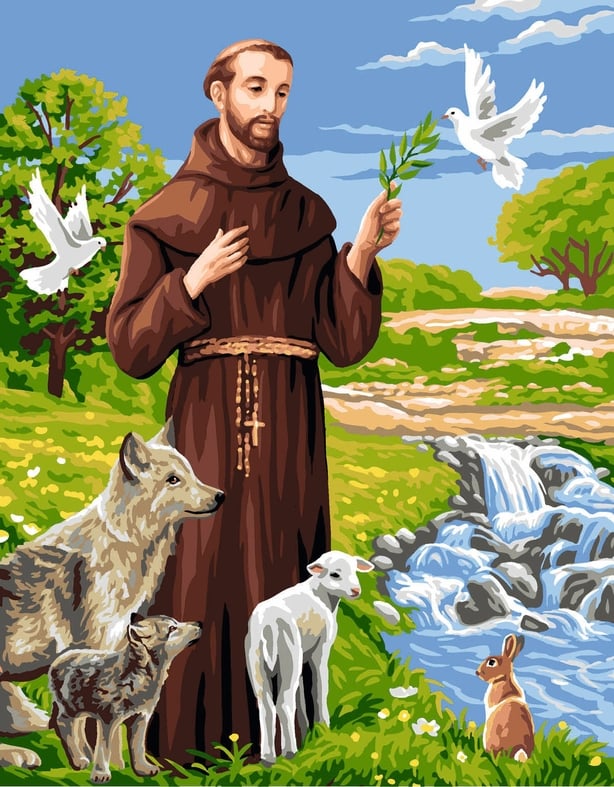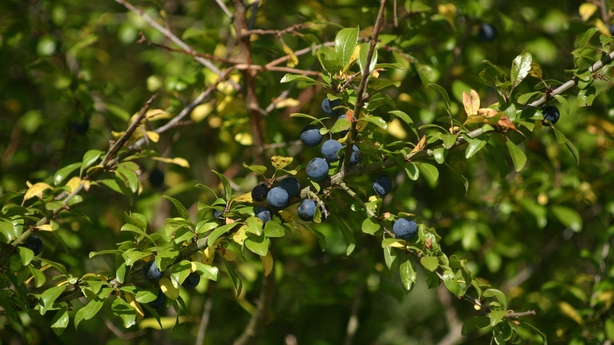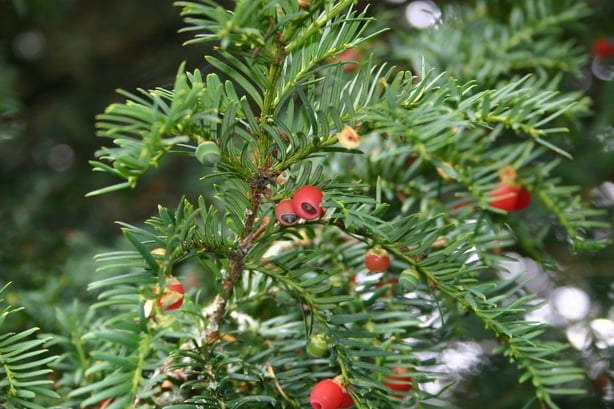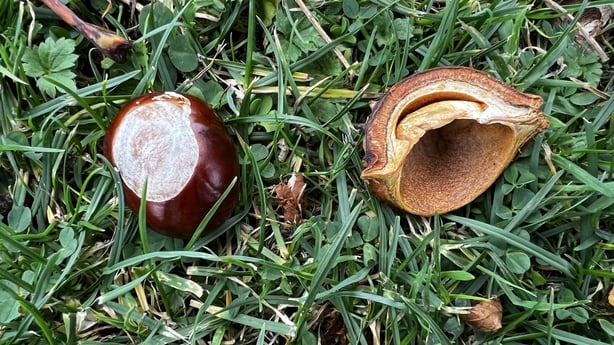October was the eight month of the year (Octo = 8) in the old Roman calenders. In Irish, it is called Deire Fomhair, meaning the end of autumn and there is a very end-of-autumn feel about this month. Nothing can be nicer than a walk on a sunny October afternoon, just to see the spectacular autumn colours of the leaves, berries and even some flowers. But you don't have to go far to see these smashing colours. Just look out into your garden. The Virginia creeper is at its very best this month. These are deciduous plants, producing a mass of rich green foliage in summer but now that’s changing to spectacular reds and yellows for just a few short weeks before they fall away. These beautiful colours are due to the various other pigments, apart from green, that are normally m˝asked or hidden by the green colour.
Your shrubs in the garden are now full of berries, with masses of red and yellow ones. Cotoneaster and Firethorns are at their best this month. No point yet in putting out the bird feeders. There’s plenty of food in the garden and you will see them gorging themselves on the berries this month.
Some years produce a massive crop of berries. It was often said that a good crop of autumn berries was a sign of a hard winter to follow:
When berries are many in October,
Beware a hard winter.
When birds and badgers are fat in October,
Expect a cold winter.
In reality, it means that there was a good late Spring, enabling many flowers to be pollinated by wind and insects, thereby producing the mass of berries we are now seeing.
St. Francis of Assisi

Francis was born in either 1181 or 1182 in Assisi. He was the son of a wealthy merchant. At the age of 20 he was captured during a dispute between Assisi and a neighbouring town and taken prisoner for a year. On release, he gave up all his wealth and devoted his life to the service of the poor. His father disowned him.
Francis believed all of Nature was a reflection of God’s will. Many stories and legends abound about Francis. Perhaps one of the most famous relates to the people of Gubbio after their flocks had been ravished by the wolf. Francis told them that they should feed the wolf, that the wolf didn’t intend any evil. He was just hungry. He referred to the wolf as Bro. Wolf (Remember the film of the 1970’s - Bro. Sun, Sister Moon).
Beasts and birds were said to have come under his charm. Half frozen bees are said to have crawled towards him to be fed in winter and wild falcons fluttered around him while nightingales sang to him.
He died on the 3rd of October 1226.
His feast day is on the 4th October.
Did you know!
It was St. Francis that started the crib tradition at Christmas!
On St. Francis Day (4th Oct.) swallows are supposed to fly to the bottom of ponds and hibernate through the winter. In the days before migration was understood, this seemed a reasonable explanation for their sudden disappearance. The fact that swallows skim the surface of ponds for insects may have been the starting point for this particular folklore.
Sloes

One plant that produces a most unusual fruit during October is the Blackthorn. The fruits are called sloes. They are a beautiful dark blue colour, not unlike grapes. Why not collect some and use them to make Sloe Gin. A simple recipe for a bottle of sloe gin:
Pick the sloes during this month, when they are most ripe. Take a litre bottle of gin and remove have of its contents. To the other half litre of gin add sloes to almost fill the bottle. Add 150 grams of sugar
Now turn or agitate the bottle daily for a week, then weekly for a month or two ... by which time it will be ready to drink (but it is really best kept until the next winter).
Hedgehogs in the garden:
Last summer was the best I ever had with up to seven individual hedgehogs visiting the garden for food. This summer the most I recorded was five. Their visits are now rapidly decreasing as they are now preparing for hibernation. I expect no activity after the end of the month. However, I am always on the lookout for small hedgehogs this month. They may be the result of a late litter or just a weak hedgehog.
Any hedgehog that has not reached 600 grams when the weather turns very cold will not have the fat reserves to survive hibernation, and will have to be kept indoors throughout the winter
For more information on hedgehog hibernation click here
Yew

The Yew is a most splendid tree, often planted formally in Parks, Gardens and cemetries. The Irish Yew, Taxus bacatta, is common throughout the country. The wood of the yew was traditionally used to make longbows. It is a very long lived tree. Most ancient yews can be found in old churchyards, especially in England. Because it is such a long-lived tree it was often seen as a symbol of longevity. However, it was believed by some, that vicars planted this tree in the churchyard (graveyard) as a means of keeping livestock out. Farmers would have turned a blind eye to their cattle getting a free feed in the local graveyard, but because the yew is an extremely poisonous plant and could kill animals, they had to make sure that their livestock did not venture into "God’s acre" as it was then called.
This month sees the berries of the yew at their best. The very dark coloured seed is enclosed by a bright red cup, a very sticky fruit. The seed is poisonous and only some birds will eat it. Most will discard the seed before feeding on the sticky fruit. Lots of these small dark seeds can be seen under any yew tree. Another unusual fact about these seeds is that they will not germinate next Spring, but need to remain dormant for 18 months before germinating.
Whitecoats

October is traditionally the month in which Grey seals give birth. Grey seals are found around the coast of Ireland and this month they can be easily seen on rocky coasts and islands. Females give birth to one young, which has a beautiful white coat and hence the young are known as whitecoats. The mothers feed the young on milk (the richest milk in the animal kingdom at about 55% fat) for about three weeks during which time the young treble their weight and also start to lose their white fur revealing their distinctive darker fur beneath. If you come across a young seal while out walking on the seashore, do NOT approach it or try to pet it. This is a wild animal and it’s mother will be closeby monitoring the situation. Enjoy it from a distance.
Conkers

A conker is a seed from the Horsechesrnut tree and this is the best month for collecting them. It is also the name of the game often played by young children (but also by some adults!). The World Conker Championships is held eve/ry year on the second Sunday of October on the Village Green at Ashton in Northamptonshire in England. The origin of the name "conker" is unclear but it is thought to stem from the French word "cogner" meaning to hit.
Conkers are not eaten by humans but are eaten by deer and horses. This is probably how it acquired the name "horsechestnut". Another reason may be the arrangement of the veins leading into the petiole of the leaf. If you break off a leaf from the stem of the tree, you will see the distinct arrangement of the veins - just like the hoof of a horse!
The Sweet Chestnut or Spanish Chestnut tree is the tree that produces edible fruit. Although this tree grows in some places in Ireland (Avondale House in Co. Kildare is a good example), generally the tree does not produce fruit here in Ireland.
